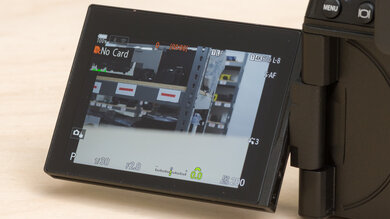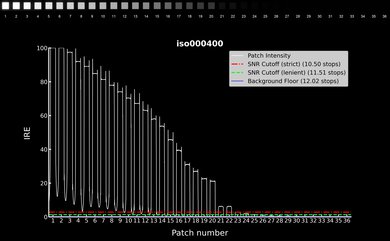
Look! Up in the sky! It's a bird! It's a plane! It's... no, wait, yeah, it's a bird. And if you're looking for the best camera to capture it in all its glory, you've come to the right place. However, let's get this out of the way up front: wildlife photography isn't cheap. In addition to choosing a camera body, you'll have to consider the cost of expensive telephoto lenses and other equipment like tripods and memory cards. So, keep that in mind as you consider your options.
With that out of the way, crop sensor cameras are often favored for birds and other far-off wildlife because the size of equivalent telephoto lenses is typically smaller, meaning you can keep the overall size of your kit down. The crop factor means that you can capture far-away subjects at shorter equivalent focal lengths than you would with a full-frame sensor, though there's a slight trade-off in low-light performance. Other factors to consider include ergonomics, battery life, shooting speed, and autofocus to ensure your subjects stay in focus.
We've bought and tested over 110 cameras in our lab, and below, you'll find our recommendations for the best cameras for birding and bird photography. If you're looking for the best cameras for photography more broadly, check out our picks there. Or, if you're more interested in landscapes than the animals that inhabit them, try our best cameras for landscape photography. Lastly, you can also check out the best cameras we've tested.
-
Best Camera For Bird Photography
Travel Photography7.9Landscape Photography7.7Sport & Wildlife Photography7.5Vlogging7.7Studio Video8.5Action Video7.0Performance Usages: Raw Photo7.5The OM SYSTEM OM-1 Mark II is the best camera for bird photography that we've tested. A Micro Four Thirds (MFT) camera like this is ideal for birding and wildlife photography thanks to the more portable size of telephoto MFT lens options, not to mention its excellent ergonomics and battery life. The camera's also ruggedly built, with IP53-rated weather-sealing to protect against dust, moisture, and cold, making it the all-terrain vehicle of cameras.
As far as performance goes, this model features a robust autofocus tracking system with subject detection modes for a wide range of subjects, including birds. Its stacked sensor allows for remarkably quick burst shooting in electronic shutter mode, with minimal rolling shutter distortion, so you can easily capture trickier subjects like birds in flight. Plus, the 'Pro Capture' mode allows you to pre-buffer burst images before the decisive moment, ensuring you don't miss critical shots like the moment a bird takes off or lands. Of the cameras we've tested, this is the ultimate choice for birding and wildlife photography.
-
Best Upper Mid-Range Camera For Bird Photography
Travel Photography8.1Landscape Photography7.7Sport & Wildlife Photography8.7Vlogging7.7Studio Video8.9Action Video5.7Performance Usages: Raw Photo7.5If the OM SYSTEM OM-1 Mark II is out of your price range, the Canon EOS R7 is the next best choice. It's a fantastic APS-C model that's tailored largely towards wildlife and bird photography. With one of the most reliable AF systems on the market, including subject detection modes for birds and more precise eye tracking, it's well-suited to capturing birds in flight, and its high-res sensor gives you some added leeway to crop in your images. On top of that, it has a superb battery life and quick burst shooting for those that need it.
The biggest downside here is that RF lens selection is more limited than, say, the Micro Four Thirds system, especially if you're looking for telephoto options that won't break the bank. However, it's fairly seamless to adapt older EF/EF-S lenses to the RF mount, of which there are plenty, though using an adapter means added cost and bulk. Still, the other features offered here make this one of the best cameras you can get for bird photography at this price point.
-
Best Mid-Range Camera For Bird Photography
Travel Photography7.5Landscape Photography7.3Sport & Wildlife Photography7.9Raw Photo Performance7.4Vlogging7.3Studio Video8.2Action Video4.1While they aren't as portable as newer mirrorless models, DSLRs are a great choice for those who want to save some money. The Canon EOS 90D is an excellent mid-range DSLR that's well-suited to bird photography. While it's fairly bulky, it uses a high-resolution APS-C sensor, just like the Canon EOS R7, giving you some cropping leeway and slightly more portable lens options than you'd get with a full-frame camera. There are plenty of EF and EF-S lenses to choose from, and the camera's built to last, with a battery life that beats every other option on this list.
Of course, being an older model, its autofocus system isn't as sophisticated as the one on the R7, but it still does a good job tracking moving subjects, and you'll have few issues with more stationary birds. Burst shooting is also slower than on many mirrorless options, but at 11 fps, you can still capture plenty of action shots in burst mode. If you need a tried-and-true camera that won't cost too much, this is a great choice, with plenty of used models available for even less.
-
Best Budget Camera For Bird Photography
Travel Photography7.6Landscape Photography7.6Sport & Wildlife Photography7.4Vlogging7.3Studio Video6.9Action Video4.7Performance Usages: Raw Photo7.4The Olympus OM-D E-M10 Mark IV is the best option for those on a tighter budget or just starting out. As mentioned previously, Micro Four Thirds is one of the best camera systems for birding and wildlife, with a plethora of more portable and typically more affordable lens options than larger sensor counterparts.
The EM-10 Mark IV is a highly portable model with fairly accessible controls and good ergonomics for its size. It's also one of the few budget cameras to feature in-body image stabilization (IBIS), which can come in handy when shooting without a tripod or when capturing stationary subjects at slower shutter speeds. While its autofocus tracking system isn't the most reliable, the camera can shoot at quick burst speeds and has great image quality for its class.
-
Best Superzoom Camera For Birding
Travel Photography6.9Landscape Photography6.8Sport & Wildlife Photography7.5Vlogging5.7Studio Video7.8Action Video5.5Performance Usages: Raw Photo6.0If you're more interested in identifying birds than capturing photos with the best quality, check out the Sony RX10 IV. It's one of the best cameras for birding that we've tested. Unlike our picks above, this bridge (or "superzoom") camera features a built-in lens and a smaller 1-inch type sensor, allowing you to shoot at full-frame equivalent focal lengths of up to 600 mm without the bulk of interchangeable telephoto lenses.
Beyond that, this is one of the most premium bridge cameras on the market, with a sturdy, weather-sealed design, a high-res viewfinder, and a relatively long battery life. Its stacked sensor allows for quick burst shooting at up to 24 fps with minimal rolling shutter distortion, and Sony's autofocus effectively tracks moving subjects better than most bridge cameras. Ultimately, if you want an all-in-one camera for identifying and taking pictures of birds more casually, this is the camera to get.
-
Best Budget Superzoom Camera For Birding
Travel Photography7.0Landscape Photography6.9Sport & Wildlife Photography7.2Raw Photo Performance6.4Vlogging6.9Studio Video7.6Action Video2.8While the Sony RX10 IV is an impressive bridge camera, it's also on the expensive side for a point-and-shoot. If you're on a tighter budget, the Panasonic LUMIX FZ1000 II is the next best bridge camera for birding. Like the Sony, it uses a 1-inch sensor, so the image quality is good for its class. While its built-in lens doesn't have the longest zoom range among bridge cameras, its max 400 mm equivalent focal length still gives you a fair amount of range to capture or identify far-away birds.
It doesn't have a stacked sensor like the Sony, but it can still shoot at fairly quick bursts of up to 11 fps and has a decent autofocus system. It's also a fairly well-built camera with a good battery life and a relatively compact design. Plus, it has handy extra features like '4k PHOTO' mode, which lets you pull stills out of brief 4k video clips, ensuring you capture every moment of fast action. Overall, this is a very well-rounded model for the price.
Notable Mentions
- Nikon COOLPIX P1000: While the Sony RX10 IV offers a good balance of zoom range, image quality, and functionality, the Nikon COOLPIX P1000 is the superzoom camera to get if you need the most zoom possible. With a 125x zoom range, it can zoom much farther than the Sony, but it's also a much bulkier camera with significantly worse image quality and autofocus. See our review
- Nikon D850:
One of the best DSLRs ever made, the Nikon D850 is a great choice for wildlife photography. While it isn't nearly as portable as mirrorless alternatives, one of the main appeals of going with this workhorse is the wide range of F mount lenses available at reasonable prices.
See our review - Nikon Z 6III: The Nikon Z 6III is one of the best full-frame cameras for birding and wildlife photography. With a partially stacked sensor that gives it a faster readout speed, on top of quick burst shooting, a very high-res EVF, and a highly effective autofocus system, it's well-suited for this. That said, it's more expensive than the OM SYSTEM OM-1 Mark II and a lot less portable, considering the size of full-frame lenses. See our review
- Panasonic LUMIX FZ80D:
The Panasonic LUMIX FZ80D is a good budget bridge camera for birding. It's notably cheaper than the Panasonic LUMIX FZ1000 II for those who are on a tighter budget, and it has a longer zoom range thanks to its smaller sensor, but it isn't nearly as well-built, has a fixed screen, and captures worse image quality overall.
See our review
Recent Updates
-
We added the Nikon D850 as a Notable Mention.
-
Oct 10, 2024 : We added the Panasonic LUMIX FZ80D as a Notable Mention because of its affordable price point and long built-in zoom range.
-
Sep 12, 2024 : We've brushed up the text throughout for clarity.
-
Aug 14, 2024 : We added the Nikon Z 6III as a Notable Mention, thanks to its well-rounded feature set.
All Reviews
Our recommendations above are what we think are currently the best cameras for most bird photographers and birding enthusiasts, according to their needs. We factor in the price, feedback from our visitors, and availability (no cameras that are difficult to find or almost out of stock in the U.S.).
If you'd like to choose for yourself, here's the list of all our camera reviews. Be careful not to get caught up in the details. There is no single perfect camera. Personal taste, preference, and shooting habits will matter more in your selection.
Comments
Best Cameras For Bird Photography: Main Discussion
What do you think of our picks? Let us know below.
Looking for a personalized buying recommendation from the RTINGS.com experts? Insiders have direct access to buying advice on our insider forum.
Update: We added the Nikon D850 as a Notable Mention.
What do you think of these changes? Let us know




































































